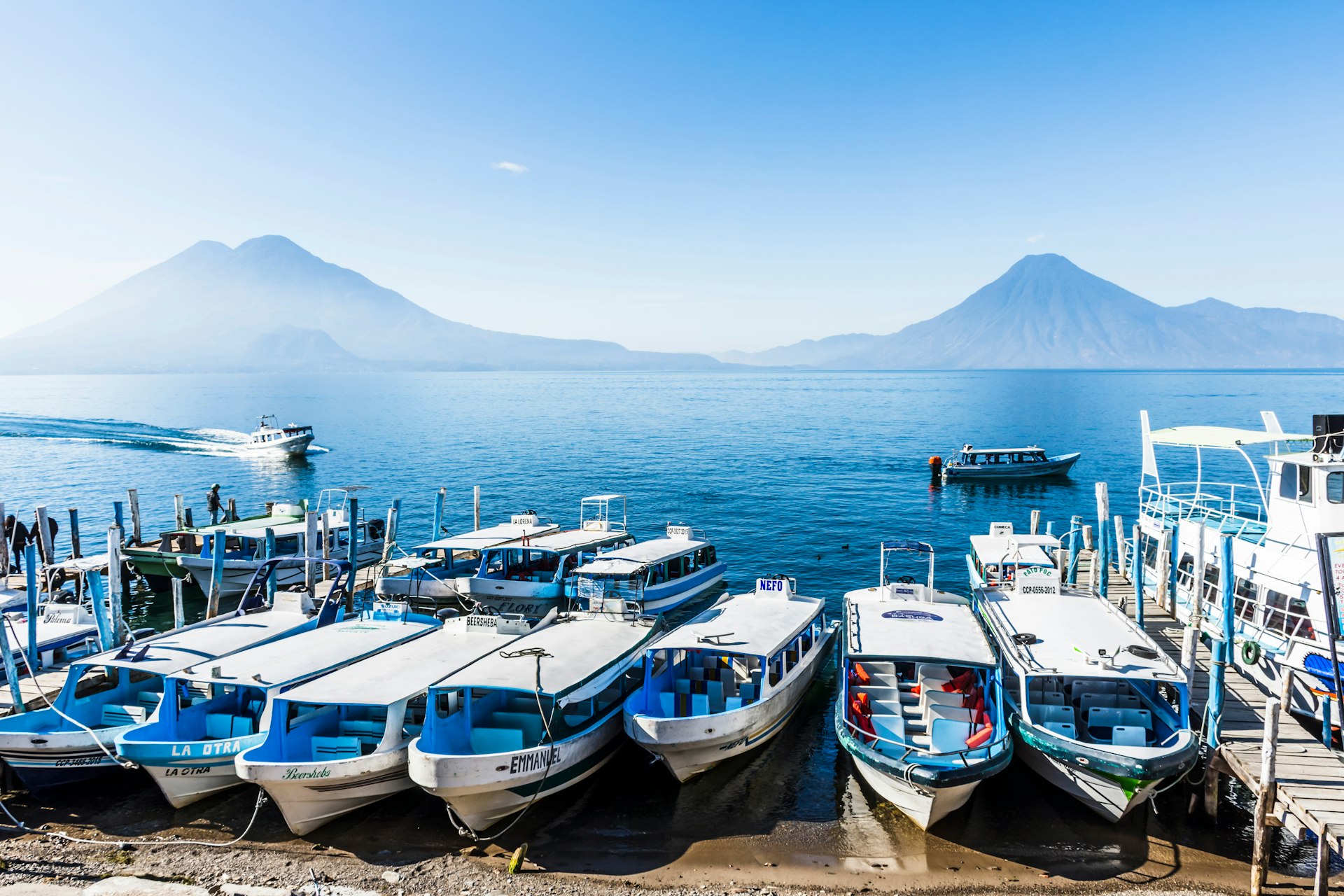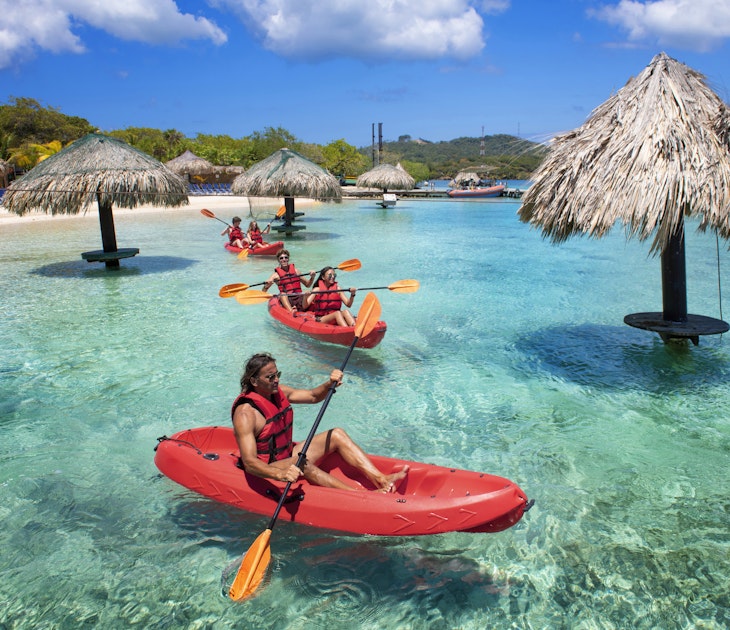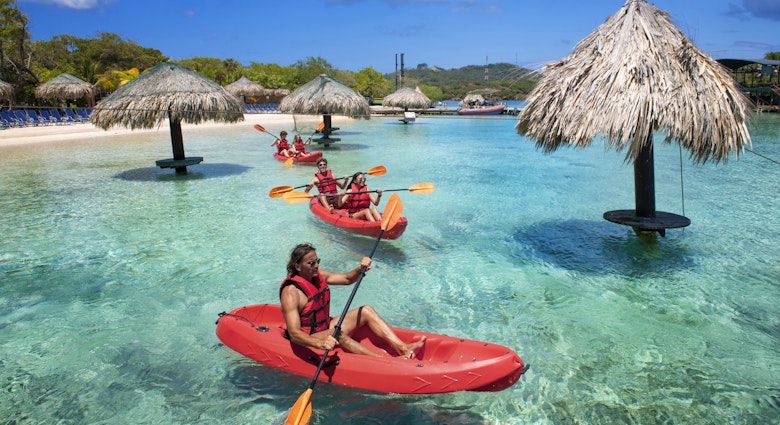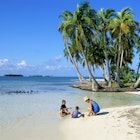Spanning seven countries and countless beaches, jungles, volcanoes and lost cities, Central America is surprisingly compact. The Pan-American Highway runs for nearly 2000km (1240 miles) along this chain of Spanish-speaking countries, but the isthmus is no wider than 560km (35o miles) across at its widest point.
With enough time and patience, all seven countries can be traversed by bus, daisy-chaining from Guatemala and Belize through Honduras and El Salvador to Nicaragua, Costa Rica and Panama. With less time to spare, it's easy to pair up countries – perhaps Mayan pyramid-hopping in Guatemala combined with scuba-diving in Belize, or toucan-spotting in Costa Rica paired with cruises along Panama’s famous canal.
Here's what you need to know about getting around Central America.
The easiest and cheapest way to explore Central America is by bus
Central America has a bus for every budget and every kind of traveler. The backbone of bus travel in the region is the 'chicken bus' – these repurposed and gaudily painted North American school buses race along highways, belching black smoke and stopping in every city, town and hamlet. Buses cover fixed routes with the destination displayed on the front windscreen, and are as much a cultural experience as a way to get from A to B.
Vast numbers of minivans follow similar routes to the chicken buses, leaving when full for a slightly higher fare. Then there are tourist-orientated shuttle buses linking major hubs, such as the ones provided by Interbus in Costa Rica. In line with its famous green credentials, Costa Rica is trialing electric buses in San José, with the aim of moving the whole country to all-electric buses by 2030. Pura vida!
For long-haul trips between major cities, there are long-distance bus lines such as Ticabus, which serves destinations across the region’s seven countries using comfortable buses equipped with toilets, air conditioning, WiFi, reclining seats, and on-board security for less stable parts of the isthmus.
Other useful lines include Trasnica, which operates in Costa Rica, Honduras, and Nicaragua, and Transporte del Sol in Guatemala, El Salvador, and Nicaragua.
Taxis are plentiful in all the major cities
Taxis are cheap and plentiful across Central America. However, tourists are often charged elevated rates, so try to use a radio taxi or official taxi, rather than flagging a cab down on the street. If the taxi has a meter, insist it’s turned on, or take a different cab. For longer journeys, you'll normally have to negotiate a price – and confirm the currency! – before you set off. Carry small bills to pay for taxi rides and grab all your baggage before you hand over any money.
To the annoyance of local taxi drivers, Uber is now available in Panama City (including Uber Assist for people with accessibility issues), Guatemala City and Antigua, San Salvador, and Costa Rica’s Central Valley, and drivers will often take you around the country from these urban hubs. Local ride-hailing app, inDriver, is available in all of the above countries, plus Honduras and Nicaragua.
Three-wheeled mototaxis – the Central American take on tuk-tuks – are becoming increasingly popular in many parts of the isthmus, with fares negotiated as for taxis.

Hiring a car is expensive, but great for exploring
Hiring a car doesn’t come cheap in Central America, but it’s a great way to get off the tourist trail and explore the isthmus at your own pace. Driving in Central America isn’t for the fainthearted – you'll face challenges ranging from bumper-to-bumper traffic in cities to rural roads crowded with cows and wildlife, and erratic drivers ignoring traffic signs everywhere.
All the major rental car companies have outlets at international airports, in capital cities, and in popular tourist destinations. Most countries allow you to drive with your home driving license, but there's no harm in carrying an International Driving Permit just in case. You'll pay a lot more to pick up a car in one place and drop it off at another location, and even higher premiums to cross international borders (if the company allows it at all).
A decent 4WD vehicle is a must if you’re going off-the-beaten-track and planning to tackle any dirt roads. Always make sure the vehicle comes with all the necessary safety equipment, including a functional spare tire, and always read the rental agreement’s small print and take out as much insurance as possible to reduce what you might have to pay in the event of an accident.
On the road, keep emergency services numbers to hand in case of breakdowns, and drive cautiously and defensively. Never leave valuables unattended in your car, and avoid driving at night. Also keep your passport, driving license and rental papers to hand in case you have any dealings with the police.

A boat journey in Central America will take you places you wouldn’t otherwise reach
Central America has two beach-sprinkled coastlines facing the Pacific Ocean and the Caribbean Sea and dozens of stunning lakes and jungle-fringed rivers. A boat can be the best – and sometimes the only – way to get from A to B.
In Nicaragua, there are regular sailings from San Jorge to the bucolic island of Ometepe on Lake Nicaragua. Boats also run from Bluefields on the Caribbean Coast to the icing sugar-soft beaches of the Corn Islands, and you can ferry-hop from La Ceiba to the underwater paradise of the Bay Islands in Honduras.
On Costa Rica’s Caribbean coast, Tortuguero can only be reached by boat or plane, with small boats chugging along the wildlife-rich canals of its namesake national park. On the Pacific Coast, a regular ferry service connects Puntarenas with Playa Naranjo and Paquera, providing easy access to the year-round surf breaks on the Nicoya Peninsula. And daily ferries operate from Golfito to Puerto Jiménez on the wild and wonderful Osa Peninsula.
In Guatemala, you can explore the myriad Mayan villages that dot the shore of Lake Atitlan by lancha (public boat); Panajachel is the main hub for ferry services. And don’t miss a trip along one of the planet’s greatest man-made marvels, the Panama Canal, squeezing along those famous locks and admiring the engineering genius of the Culebra Cut. A partial transit of the isthmus by cruise boat takes around six hours.
Let the plane take the strain
If you’re cash-rich and time-poor, flying can knock hours off many road trips, though there's an environmental impact to consider in those calculations. For example, the flight from Guatemala City to Flores – gateway to the towering temples of Tikal – takes just one hour, compared to an eight-hour journey by bus.
Panama-based Copa Airlines and Colombian flag carrier Avianca operate the majority of services on the isthmus, and both are part of Star Alliance, making for easy international transfers. Discount Mexican carrier Volaris has some very reasonable low-cost fares to Guatemala, Costa Rica, Honduras, and El Salvador.
You can also take a "puddle-jumper" – a small propeller-driven aircraft used for short local and mainland-to-island hops. You'll share the tiny open cabin space with the pilot, and you’ll often be weighed along with your baggage at check-in, so pack light.
These diminutive planes are a popular alternative to long road trips and bumpy boat rides to Central America’s fringing islands. Useful routes include Tropic Air's service from Belize City to Caye Caulker, and La Costeña's shuttle from Bluefields and Managua to Nicaragua’s Corn Islands.

Urban transport is easy in major cities
Trains may be scarce in Central America, but Panama City has the region’s first and only metro, linking the northern and southern reaches of the metropolitan area to the city center, with more lines under development. You’ll need to buy a rechargeable Metro, MetroBus, or RapiPass card to use the service, and these tickets also work on the city’s buses.
In Costa Rica, the Interurbano Line is a commuter train connecting the provinces of San José, Alajuela, Heredia, and Cartago in the lush Central Valley. In other major cities, downtown transport is provided by fleets of local buses, mototaxis and conventional taxis.
My favorite way to travel in Central America is by 'chicken bus'
Traveling on a chicken bus is an experience like no other. On journeys across the isthmus, I’ve shared a seat with a strident caged cockerel and been swept off the bus by the voluminous skirts of Guatemalan ladies eager to get to market.
It’s always easy to strike up a conversation with your fellow passengers – if you can hear them above the tinny music played at ear-splitting volume on the bus stereo – and a little Spanish goes a long way when it comes to breaking the ice. The buses can be cramped, hot, dusty, and sometimes downright dangerous when careering around blind corners at breakneck speed, but the experience is never dull.
Accessible travel in Central America
Central America still has a way to go before it becomes a truly accessible destination, but it’s not all bad news. Strict accessibility laws saw Costa Rica named the world's best accessible travel destination in 2021, and awareness of accessibility issues is growing around the region.
Throughout Central America, obstacles include buildings with steps, poor (or absent) sidewalks, hotels without elevators, a general absence of safe road crossings and few accessible buses or boats. In general, hiring a vehicle or using taxis is often the easiest option for those with mobility issues. For more information, see Lonely Planet's Accessible Travel Resources page.
You may also like:
The 14 best beaches in Central America
15 things you absolutely must do in Central America
8 of the best places to surf in Central America for beginners to pros












